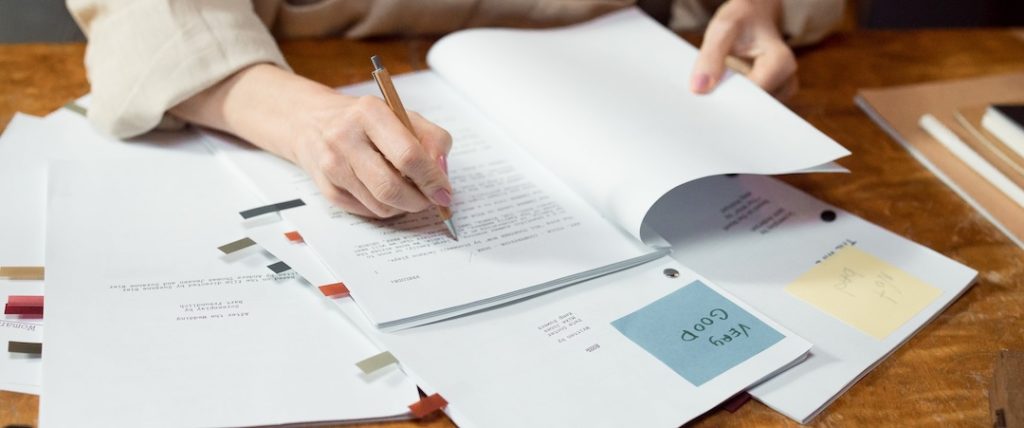Development
Critical Factors for Development
In the Development phase of production you will identify several critical factors for your production’s needs.
- Audience – Who is the target audience for this message (faculty, staff, current students, potential students, externals)?
- Purpose – What do we want our audience to DO once they’ve seen our video (contact us, get information, sign up, change behaviour)? Why are we making a video?
- Key Message – What is the ONE thing we want our audience to know once they’ve seen our video?
- Delivery – Where will our audience engage with this material (website, YouTube, social media, online class, newsletter link, live presentation)?
- Outcomes – How will we know if our video was effective (increased enrolment, web traffic, visual change in behaviour)?
Once we have these critical factors locked down we can begin to further develop the concepts for our production.

Synopsis
A synopsis is a short two to four sentence statement that clearly states the critical factors you defined above. Your synopsis should summarize the content and message of the media and briefly state who, what, and how.
Sample Synopsis:
This video is aimed at USask faculty and instructors and is intended to introduce them to the DIY UCreate Studio in Media Production by presenting a typical recording session and some enticing, creative samples of what can be created there. This video will be embedded on the UCreate web page as well as in the UCreate User Guide in Pressbooks. We will link to these when we promote workshops in newsletters across campus with the intent of increasing the bookings for this facility by teaching and learning staff at USask.
Treatment
Your Treatment builds further on the critical factors and synopsis you’ve already developed by showing HOW your story will be told. It is a sketch of your film written to demonstrate the structure and can also begin to create the story structure or the breakdown of the film’s sections, or acts.
Begin to develop an understanding of the elements or approach you will use to tell the story. Narrative, interviews, animation, photography, stock footage and graphics all provide various styles or methods of delivering the story. How will you use these various elements to structure and tell the story.
For example, you might choose to interview successful graduates of your program and intercut these interviews with dynamic footage of current students engaged in active learning scenes to create a program overview video meant to entice prospective students to enrol. In this case you would:
- describe the various activities and scenes that must be filmed
- define the types of alumni you’d like to interview and what you’d like them to discuss
- determine any graphic elements you might want to use including program stats, logos, titles, or images
- decide if any narration is required to cover key points not covered by interviews
The treatment for a short video is typically 1-2 pages in length and provides a written outline of your video elements from beginning to end. This descriptive document should give stakeholders a clear vision of HOW your synopsis will be achieved through the medium of video.
Remember to look back at your Synopsis and keep in mind the Critical Factors you defined early on to ensure that you’re staying on message and that the intent and delivery of your production stays true to those initial intentions.
Script
Keeping everybody on the same page is easier when you have a clear and detailed script to follow. The script will provide detailed instructions and descriptions of every shot that will be captured for your video. From dialogue, to sound effects, camera movements to characters, the script leaves no detail unsaid.
Whether you’re shooting a narrative scene with scripted dialogue or a more documentary type piece with interviews and b-roll, your script may look fairly different. One script template we like to use in Media Production allows for either workflow fairly well and can be adapted to fit your productions needs in most cases.
Below we have provided you with blank .docx version of the Media Production script template and a PDF sample version with a few script elements already filled in so you can see the level of detail that should be provided in your production script.
 |
 |
Storyboards
A visual representation of the video, the storyboard gives your cast and crew shot details that keep everybody seeing the same vision. You do NOT need to be an artist to put together an effective storyboard. Stick figures and scribbled arrows can often communicate a lot of information when you’re trying to coordinate an actor, a camera operator and others to get the shot in the can. Storyboards often provide a few written details along with a visual depiction of each shot that can communicate actor movement, camera movement, composition decisions and more. They are a great reference for your cast and crew to get a quick glance at as you all work together to compose the same vision.
Below we have provided you with blank .docx version of the Media Production storyboard.


